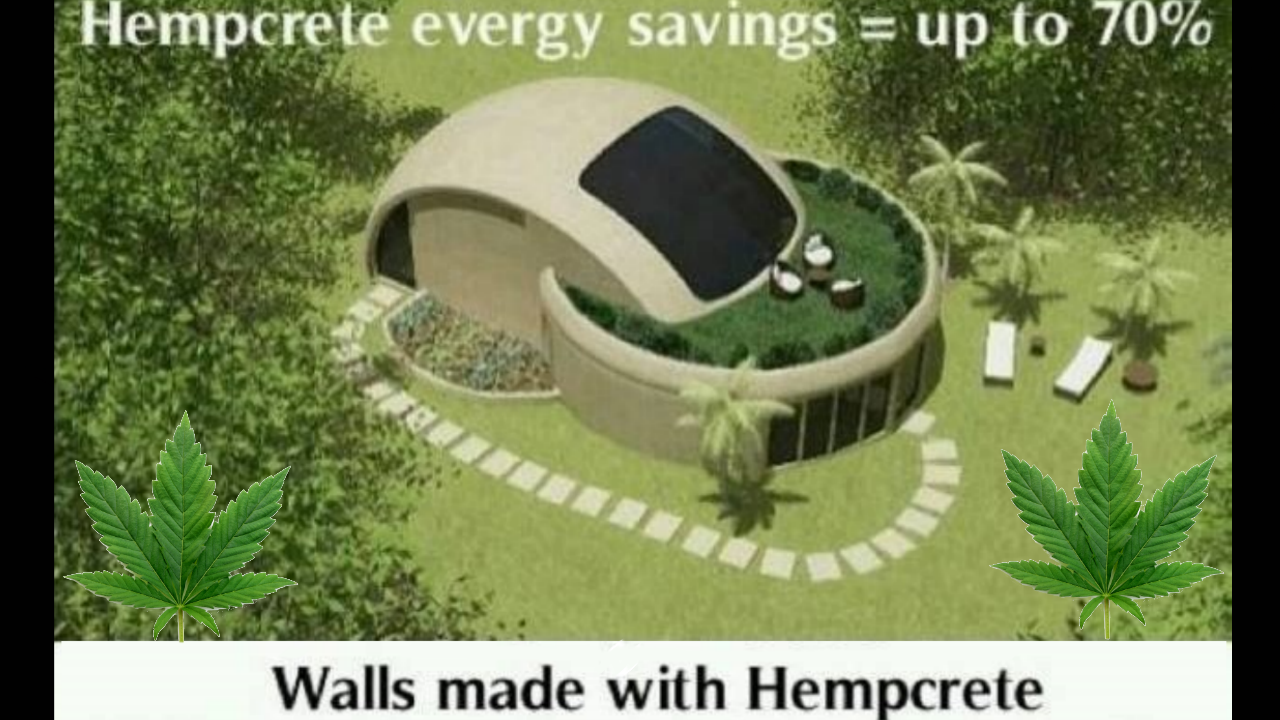Hemp-Powered Homes: The Benefits of Building with Solar Windows, Hemp Plastic, and Hempcrete
In an age where sustainability is no longer a luxury but a necessity, the materials we choose to build our homes with are under increasing scrutiny. One of the most promising solutions rising from both ancient wisdom and modern innovation is hemp—a versatile, fast-growing plant that’s revolutionizing construction from the ground up. Imagine a home built with walls of hempcrete, fitted with solar-generating windows made of hemp plastic, resistant to mildew and termites, whisper-quiet inside, and gentle on the planet. This is no longer a dream—it’s a viable path to the future of sustainable living.
Hempcrete: Nature’s Concrete Revolution
Hempcrete is a biocomposite material made from the woody core of the hemp stalk (known as hurd), lime, and water. Though lighter and less dense than traditional concrete, it offers several performance benefits without the environmental drawbacks.
First and foremost, hempcrete is naturally mildew and mold-resistant. The lime in the mixture acts as a desiccant, and the breathable structure of the hemp allows moisture to move through the walls rather than get trapped, preventing the formation of harmful spores. In humid climates where mold can damage property and health, this is a game-changer.
Secondly, termites want nothing to do with hemp. The lime in hempcrete is a natural pest deterrent, and unlike wood, hemp hurd lacks the sugars and cellulose that draw termites and other wood-boring insects. This makes hempcrete homes far more durable and less reliant on chemical pest control treatments.
Finally, hempcrete is an excellent insulator—not just thermally, but acoustically. The porous structure of the material absorbs sound, making it ideal for reducing noise pollution. Whether you live near a busy street or simply want peace and quiet, hempcrete’s sound-dampening qualities contribute to a more tranquil home environment.
Hemp Plastic Solar Windows: Energy Meets Innovation
Now imagine pairing hempcrete walls with solar windows made of hemp-based bioplastic. These next-generation windows are made from hemp cellulose—a biodegradable and renewable alternative to petroleum-based plastic—infused with transparent solar technology. This allows them to harvest sunlight and convert it into usable electricity while still functioning as traditional windows.
Compared to conventional solar panels, which are bulky and opaque, transparent solar windows preserve aesthetics and space. Every pane of glass becomes a passive energy generator, reducing a household’s reliance on the grid and lowering energy bills. Combined with a well-insulated hempcrete structure, this setup creates a powerful synergy for energy efficiency.
Even better, hemp plastic windows are stronger and more flexible than conventional plastics, meaning they can better withstand impact and extreme weather, all while being 100% biodegradable at the end of their life cycle. It’s a win for both resilience and the environment.
Eco-Friendly from Seed to Structure
One of the standout advantages of using hemp in construction is its low environmental footprint. Hemp grows rapidly—up to 15 feet in just 100 days—and requires minimal water, no pesticides, and improves soil health during cultivation. It sequesters more carbon dioxide than most trees, and every part of the plant can be used: fiber for insulation, hurd for hempcrete, and oil and cellulose for plastics.
In comparison, conventional construction materials like concrete and plastic are massive carbon emitters. Cement production alone accounts for roughly 8% of global CO₂ emissions, and plastics are typically derived from fossil fuels with significant ecological consequences. Hemp materials are not only carbon-neutral but potentially carbon-negative, storing more CO₂ than they emit during their lifecycle.
Healthier Living Spaces
Beyond environmental benefits, building with hemp also supports human health. Hempcrete is non-toxic, free of VOCs (volatile organic compounds), and naturally regulates indoor humidity—all of which contribute to better air quality. This is especially valuable for people with asthma, allergies, or chemical sensitivities.
The insulating properties of hempcrete also reduce the need for energy-intensive heating and cooling, helping to stabilize indoor temperatures year-round. Combined with solar windows, the home becomes largely self-regulating, comfortable, and energy-independent.
A Blueprint for the Future
Homes built with hempcrete and hemp plastic solar windows represent a forward-thinking blend of sustainability, durability, and comfort. These materials offer solutions to some of the most pressing issues in modern construction—carbon emissions, waste, inefficiency, and indoor health hazards.
As regulations around hemp continue to relax and innovation accelerates, these technologies are becoming more accessible and affordable. Builders and homeowners alike are recognizing that a shift toward hemp is not just environmentally responsible—it’s economically smart and personally beneficial.
In short, a house made of hempcrete and solar hemp plastic windows isn’t just a structure—it’s a statement. A statement that says the future of housing can be green, clean, strong, and serene. The plant that once fueled ancient sails and sacred rituals may very well be the foundation of tomorrow’s homes.
Sid Prince
Photo Credit: https://newatlas.com/first-us-hemp-house/17115/ https://californiahempcrete.com/


